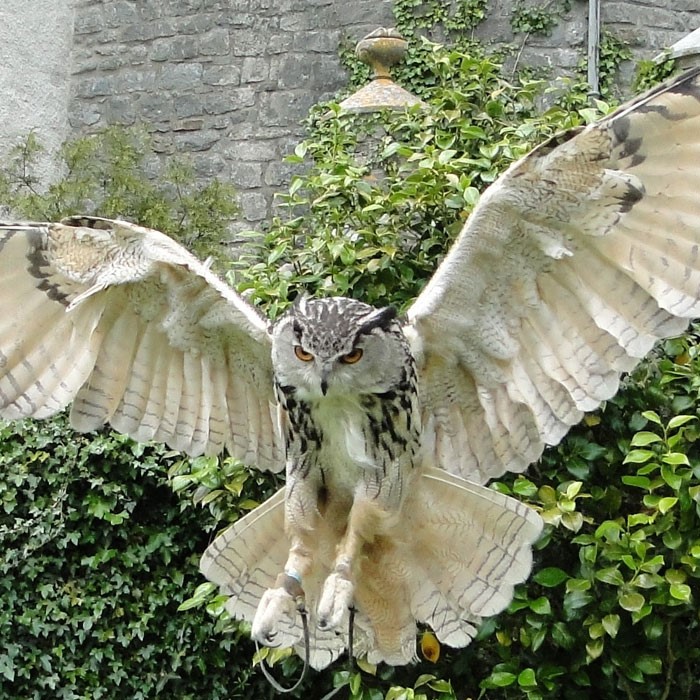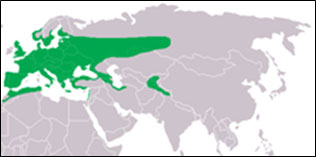
European Eagle Owl
"Hector" and "Popeye"
European Eagle owls are the largest and heaviest owls in our team by a long way.
Hector can be seen swooping over lines of people at our shows, almost low enough to touch them. When he’s happy and full, he makes a deep ‘hoo-ooo’ hooting sound all night long.
Popeye is one of the oldest members of our team. Now in his mid twenties, he's pretty relaxed about it all. If you'd like to get super close to Popeye, you can fly him yourself on our Eagle Experience Wales
Click below to Sponsor "Hector"
EUROPEAN EAGLE OWL FACTS
Bubo bubo
TERRITORY/LOCATION
Besides being one of the largest living species of owl, it is also one of the most widely distributed, it’s found in many habitats but is mostly a bird of mountain regions, coniferous forests, steppes and other relatively remote places.
HABITAT
They have been found in habitats as diverse as northern coniferous forests to the edge of vast deserts, living in almost every climatic and environmental condition on the European continent, They are often found in the largest numbers in areas where cliffs and ravines are surrounded by a scattering of trees and bushes. Grassland areas such as alpine meadows or desert-like steppe can also host them so long as they have the cover and protection of rocky areas.
CONSERVATION STATUS
Least Concern

DIET
Eagle Owls will eat almost anything the moves - from beetles to roe deer fawns, mammals (Voles, rats, mice, foxes, hares etc...), but birds of all kinds are also taken, including crows, ducks, grouse, seabirds, and even other birds of prey (including other owls). Other prey taken include snakes, lizards, frogs, fish, and crabs.
SIZE/WEIGHT
Females can grow to a total length of 56 to75 cm , with a wingspan of 131–188 cm, weighing from 1550-4200g males being slightly smaller.
NESTING
Eagle-owls will defend their territories all year around, but territorial calling appears to peak around October to early January. It typically breeds on cliff ledges, in gullies, among rocks or in other concealed locations. Usually clutch size is 1 to 4 Fledged young are cared for by both parents for about 20-24 weeks.
LIFE EXPECTANCY
20 years in the wild
60 years in captivity
SCIENTIFIC
CLASSIFICATION
KINGDOM
Animalia
PHYLUM
Chordata
CLASS
Aves
ORDER
Strigiformes
FAMILY
Tytonidae
GENUS
Tyto
SPECIES
T. alba
DID YOU KNOW?
There are approximately between 12 and 40 pairs are thought to reside in the United Kingdom as of 2016.
The BOU Records Committee compiled a dossier on the eagle owl during an assessment of its status in 1996. An extensive review revealed at least 79 reports of this species since 1684.
